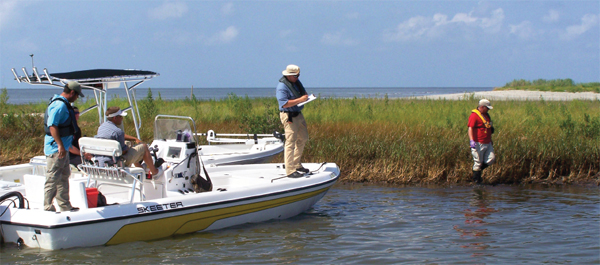In late 2014, strategic leadership for the Gulf Research Program transitioned from the founding Advisory Group to an Advisory Board (see Gulf Research Program Advisory Group Members for the current roster). The 21-member Advisory Board, whose members have 3-year terms (with one reappointment possible), is charged to provide long-term, strategic leadership as the Program grows and evolves. With their guidance and continued coordination and engagement with other funders and stakeholders, the Program will work to develop a strategic approach to funding, with a balance of short-term, medium-term, and longer-term opportunities and a diversity of work that, over time, accomplishes the mission and goals outlined in the strategic vision.
With the Program’s initial planning phase completed in 2014, 2015 is being dedicated to opera-tionalizing the vision. By the end of 2015, we look forward to reporting on the results of our first funding opportunities. We are well on our way to designing 2016 funding opportunities. But perhaps most importantly, we have begun planning larger and more ambitious initiatives.
The creation of the Gulf Research Program is an exciting opportunity for the Academies. The Program looks forward to working with others in the Gulf region and around the Nation, from the public, private, and academic sectors, to improve understanding of the connections among energy production, the environment, and the people who depend on both. We seek to enhance the Nation’s capabilities to prevent, plan for, mitigate, and respond to future oil spills. We will continue to learn from others with experience developing complex programs, improve the Program’s operations and impact, and seek opportunities to partner and leverage program funds for greatest impact.


